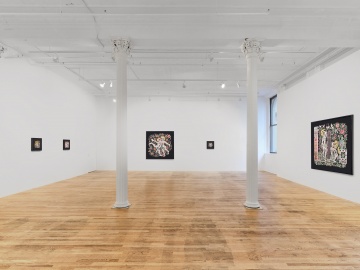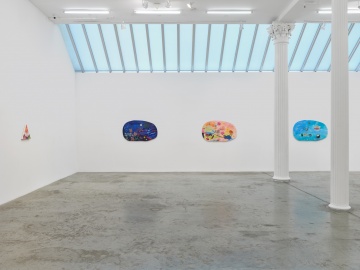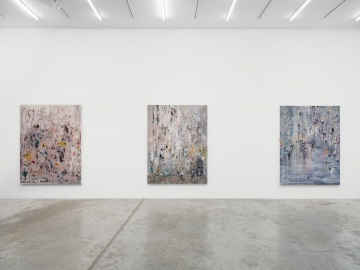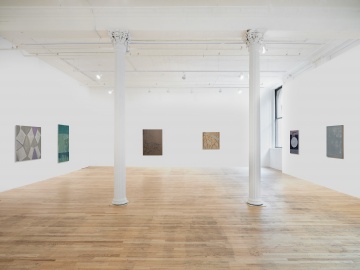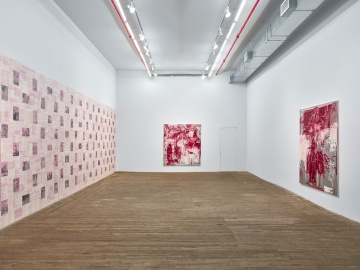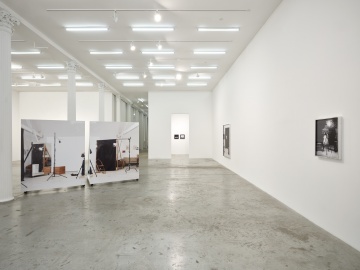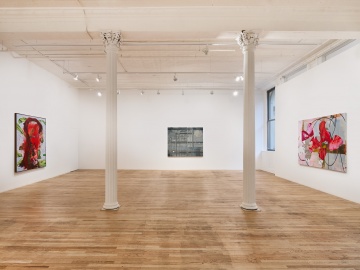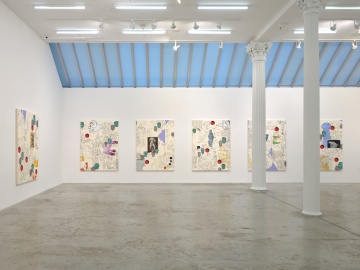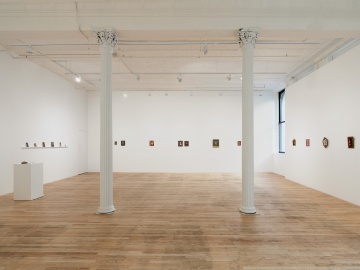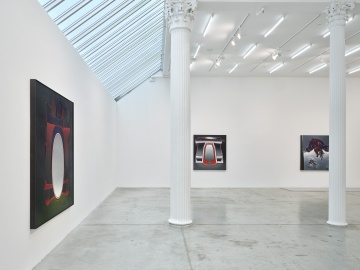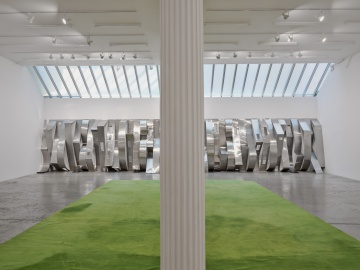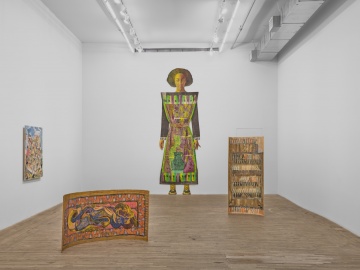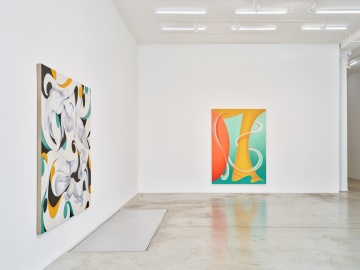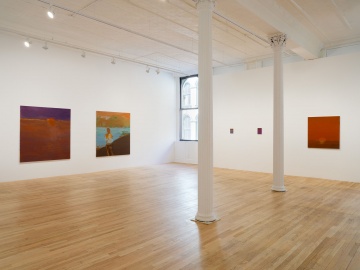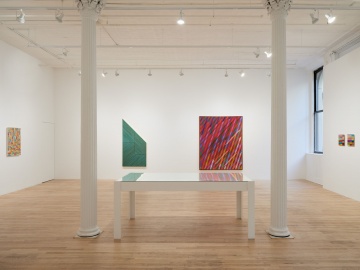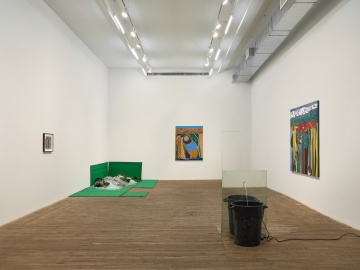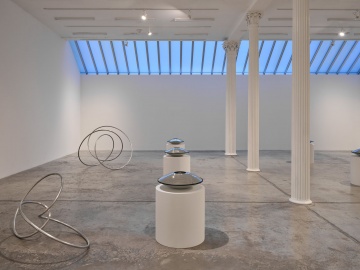Bortolami
39 Walker Street
New York, NY 10013
212 727 2050
New York, NY 10013
212 727 2050
Bortolami opened in September 2005. The gallery has presented exhibitions by Richard Aldrich, Barbara Kasten, Ivan Morley, Morgan Fisher, and Tom Burr, artists with whom the gallery has had long-standing relationships. The Bortolami program has expanded to include such artists as Daniel Buren, Ann Veronica Janssens, Caitlin Keogh, Ella Kruglyanskaya, Lena Henke, Renée Green, Lesley Vance, Marina Rheingantz, Deborah Remington, Christine Safa, Paul Mpagi Sepuya, Frieda Toranzo Jaeger, Virginia Overton, and Leda Catunda.
In 2017, Bortolami relocated to the Tribeca neighborhood of Lower Manhattan. The program has also expanded regionally with the launch of the Artist / City initiative, which brings evolving yearlong exhibitions to cities across the United States. These projects include Daniel Buren / Miami, Eric Wesley / St. Louis, Tom Burr / New Haven, Jutta Koether / Philadelphia, Ann Veronica Janssens / Baltimore, Barbara Kasten / Chicago, Paul Pfeiffer / Washington, D.C., and Cecily Brown / Buffalo.
Artists Represented:
Robert Bordo
Daniel Buren
Tom Burr
Leda Catunda
Morgan Fisher
Michel François
Sonia Gechtoff
Renée Green
Nicolás Guagnini
Lena Henke
Naotaka Hiro
Madeline Hollander
Ann Veronica Janssens
Barbara Kasten
Caitlin Keogh
Ella Kruglyanskaya
Rebecca Morris
Mary Obering
Anna Ostoya
Virginia Overton
Claudio Parmiggiani
Deborah Remington
Marina Rheingantz
Christine Safa
Aki Sasamoto
Paul Mpagi Sepuya
Frieda Toranzo Jaeger
Lesley Vance
Eric Wesley
Vian Sora
Enzo Shalom
Sable Elyse Smith
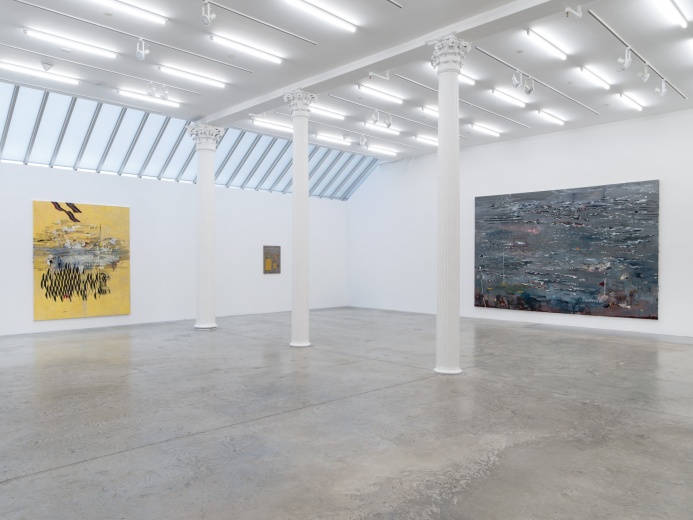
Installation view courtesy Bortolami Gallery.
Nathlie Provosty
Threshold Speech
November 7, 2025 - December 20, 2025
Threshold Speech, the title of Nathlie Provosty’s new exhibition, is a phrase taken from poet Paul Celan. It references the limitations of communicating that which exists outside of language. In an attempt to build a vocabulary for the unspeakable, Celan created a poetics of the “counter word” that upended linguistic conventions. Similarly, Provosty’s approach to abstraction subverts the dominant draconian demands placed on our attention. Through subtlety, sensuality, and a pictorial language that eludes, betrays, and rewards, the paintings act as receptacles of alternative communication systems.
Han Bing, Richard Hoblock, Vian Sora, Lesley Vance
Into the changed air
November 7, 2025 - December 20, 2025
Into the changed air features works by four contemporary abstract painters, each developing atmospheric space through divergent approaches to mark making.
Han Bing (b. 1986, China; lives in Paris, France) builds palimpsestic compositions in which earlier gestures are deliberately left unobscured. She foregrounds jagged, overlapping edges which recall the remnants of torn street posters and advertisements of urban environments.
Richard Hoblock (b.1954, USA; lives in Orient, New York) works on oiled, unprimed wood panels, using the inherent directionality of woodgrain surfaces to dictate the beginnings of his compositions. Using a combination of brush and palette knife, Hoblock spreads arcs of color across the surfaces and pulls paint along angular, energetic lines to create tight compositions unique to each painting.
Vian Sora (b. 1976, Iraq; lives in Louisville, Kentucky) pits the precision of hard edged painting against an approach rooted in both chance and dissolution. Crisp, calligraphic shapes are overlaid upon soft, colorful grounds. Sora works flat, dispersing powdered pigments into aqueous painting mediums so that colors might “bloom” into one another.
Lesley Vance (b. 1977, USA; lives in Los Angeles, California) crates compositions in which distinctions of positive and negative space are deliberately confused. Slick, sinuous bands of monochromatic color encircle multicolor grounds which have been intentionally abraded to create textures reminiscent of the natural world.
Violet Dennison, Kelsey Isaacs, Anne-Mie Van Kerckhoven, and Olivia van Kuiken
the Lord will spit out the lukewarm
January 10, 2025 - March 1, 2025
Varda Caivano, Rebecca Morris, Virginia Overton, Paul Pfeiffer, Elisa Sighicelli, and Tabboo!
June 21
June 21, 2024 - August 9, 2025

 Back to all Member Galleries
Back to all Member Galleries




